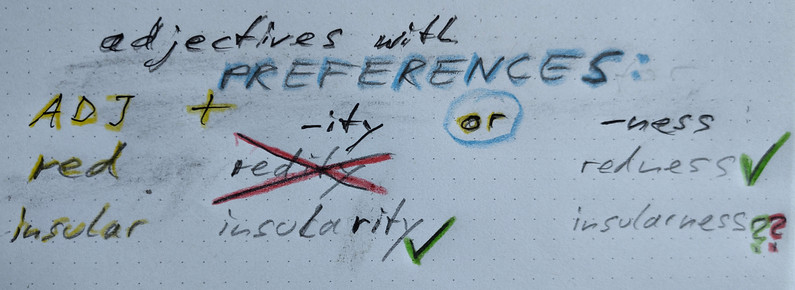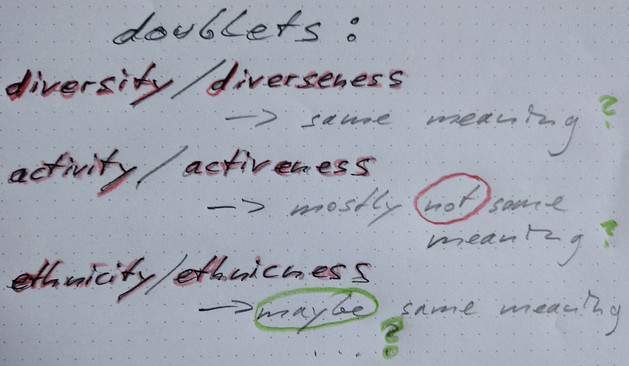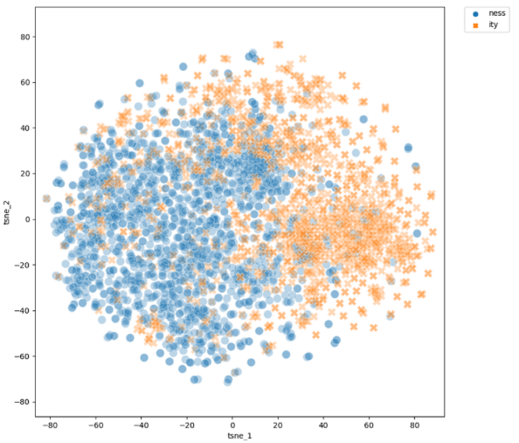Recent searches
Search options
New paper on #English #wordFormation with -ity and -ness out.
What is it about? In a nutshell: What determines the choice of ity/ness
for a given adjective? And do the two affixes contribute the same
meaning? (1/9)
#morphology
We know that there are clear preferences, in both directions: some
adjectives, for example color adjectives, only take -ness. Others,
often originally from Romance languages, prefer -ity. (2/9)
However, there are also some doublets, and sometimes they seem quite interchangeable, othertimes not so much. (3/9)
I use distributional semantics to address both questions, taking a closer look at the distributional vectors of adjectives and their -ity or -ness derivatives. I look at both adjectives that only occur with either -ity or -ness as well as doublets (4/9)
Striking result for adjectives that take only either affix:
The distributional vectors of the adjectives form rough clusters in line with their affix-preference. In line with these two clusters, the vectors can be successfully used to predict the affix preference. (5/9)
Striking result for the doublets: there is no systematic relationship between the matching derivatives, distributional similarity accross the pairs ranging from very high to very low. (6/9)
The interpretation of the data with regard to whether the two affixes contribute the same meaning is a little more complex. My data only allows me to conclude that the assumption of one single meaning change consistently induced by either affix does not seem justified :) (7/9)
For more details, and some exploration of the contribution of specific groups of morphologically similar bases in the adjectives, have a look at the paper: (8/9)
https://doi.org/10.1017/S1360674324000443
For the analytical pipeline and the vectors and R/Python scripts used, see here (9/9):
https://doi.org/10.6084/m9.figshare.23538207.v1
@demeco_project electricity / electricness? No, didn’t think so.
@Virginicus Well, doublets are weird :) And relatively rare, in my dataset I have only 130 doublets, in contrast to 3014 adjectives that occur only with -ity (1343) or only with -ness (1671). And finally, of course I had to check further for "electricness" :). It does not occur in my dataset, but in the Corpus of American English, there is a single hit, see below (with "electricity" ever so slightly more frequent, with 26014 hits :)).





